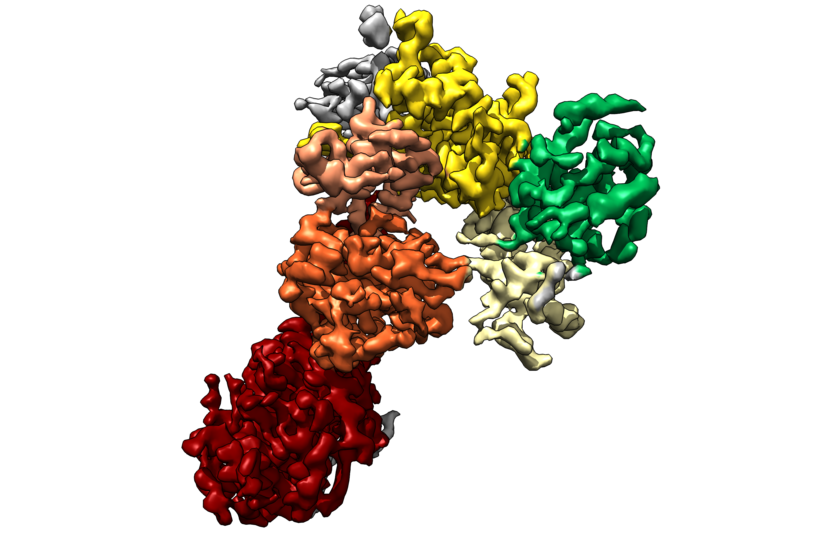
The Michael J. Fox Foundation (MJFF) plays a critical role in convening partners and competitors to work together on new treatments and disease measures for Parkinson’s. In February, we held an annual meeting on the LRRK2 protein which is linked to causing Parkinson’s.
Our LRRK2 Industry Summit virtually brought together over 120 attendees from academia and industry, making it our most inclusive Summit to date. The record number of participants from 14 companies and 19 academic institutions shared advances and challenges that will guide future strategies around LRRK2 research.
The LRRK2 protein is overactive in some people — either due to mutations in the gene that makes LRRK2 or for other reasons not yet known. Scientists believe abnormal LRRK2 activity may damage cells and lead to disease. The last few years have seen increasing interest in this target with three clinical trials in progress and many preclinical treatments in development.
“Although 2020 has been challenging, LRRK2 research and therapeutic development has continued to make great progress with Phase II clinical trials being planned for the end of the year,” said Marco Baptista, PhD, MJFF vice president of research programs, who leads our LRRK2 portfolio. “The LRRK2 Industry Summit has been a fantastic venue for LRRK2 researchers to share their findings and forge precompetitive collaborations. We are excited to see the continued translation of these scientific advances into meaningful treatments for all those who have Parkinson’s disease.”
Much of the work presented at the Summit would not be possible without MJFF contributions. Our Foundation has led support of work that is investigating LRRK2 as a therapeutic target, including confirming the safety of lowering LRRK2 levels and defining the protein structure to create better therapies to target it.
Here we share key takeaways from the LRRK2 Summit.
1. Drugs Advance in Clinical Trials
Biotechnology companies Biogen and Denali Therapeutics gave updates on their therapeutics in clinical trials. In mid-2020, the two companies announced a $1 billion deal to accelerate development of Denali’s LRRK2 program. At the Summit, Denali reported that its drug DNL151/BIIB122 was generally well tolerated in over 150 healthy volunteers and decreased the activity of LRRK2. The companies plan to initiate late-stage clinical development of DNL151/BIIB122 in Parkinson’s disease by the end of 2021.
Biogen has developed another therapeutic approach using an antisense oligonucleotide (ASO), which blocks the production of LRRK2 protein to potentially slow disease progression. This therapeutic is in a Phase I trial for safety and tolerability. Biogen reported having positive interactions with regulatory agencies and a clear path to Phase II for its ASO approach.
2. Parkinson’s Progression Markers Initiative Update
MJFF plays a critical role in providing research tools to enable studies and to look for better disease measures. Currently, there is no objective way to measure how PD progresses, which makes it difficult to determine if a therapy is slowing or halting the disease’s progression. Our Parkinson's Progression Markers Initiative (PPMI) is the first study of its kind to closely follow over time individuals with early PD and healthy volunteers to determine whether collected data and biosamples can be used either alone or together as a tool to track disease progression.
During the past ten years, the PPMI study has established a strong clinical and biomarker dataset. PPMI has now expanded to increase the number of participants across the PD spectrum from before symptoms appear to moderate PD. The Summit participants and other researchers worldwide will be leveraging data from the PPMI volunteers to better understand the relationship between LRRK2 genetics and the different ways PD affects individuals to find ways that expand LRRK2 therapeutics to everyone who has PD.
3. The Impact of Genetics on Parkinson's
Researchers have identified thousands of LRRK2 gene mutations in families – some variants appear more often than others. Having a mutation increases risk of disease, but doesn’t definitively predict a person will get PD. A large study like PPMI allows researchers to link different mutations to how the disease manifests in individuals. Groups presented data on common variants in LRRK2 as well as rare mutations. One study using PPMI data reported that a subgroup of LRRK2 carriers, who have severe loss of smell (hyposmia), develop PD at a younger age and appear to have more severe symptoms at disease onset. If the biological pathways that the common variants impact overlap with the known LRRK2 disease pathways, this opens up a wider population of PD patients who would benefit from LRRK2 trials.
4. Progress in Biomarker Discovery
Researchers are searching for ways to accurately measure LRRK2 activity in people – such biomarkers could be used to track disease progression, predict response to therapy, or indicate that a drug engages the protein target. As researchers shed light on LRRK2 biology, this enables the development of robust and sensitive biomarker tests that could be used to match individuals with PD to the right clinical trials. Some of the biomarkers that have garnered interest in the field identify abnormal LRRK2 activity leading to inflammation, faulty lysosomal function (the cells “garbage disposal”), and defective mitochondrial function (the cell’s “energy production centers”). These tests are beginning to show promise and will be further developed. Scientists have also designed tests for Rabs (proteins that are modified by LRRK2), which can indirectly measure LRRK2 activity. These tests are now ready to be evaluated in larger patient populations for their potential to diagnose and measure progression of disease.
Next Steps
These are just a few of the highlights from LRRK2 Industry Summit, but all the discussions about progress and gaps in the field trigger actionable steps. With the insights gained, the leaders in the field head back to their labs around the world to move research forward that will bring therapies closer to patient hands.